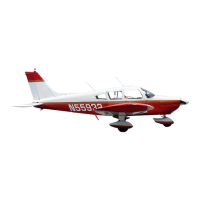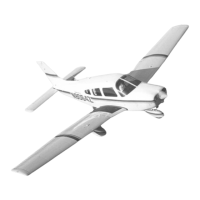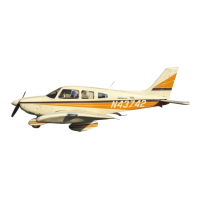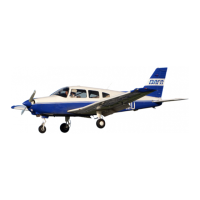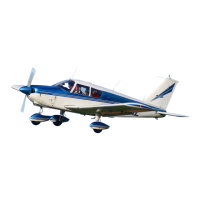GENERAL.
DESCRIPTION AND OPERATION.
Because of the simplicity of the heating and ventilating system installed on both the PA-28RT-201 and PA-
2 8 RT-201T models the operation and maintenance instructions of the components are contained in Heater
Maintenance. A pictorial description of these systems may be found in Figure 21-1 or 21-2 and Figure 21-3.
On the PA-28RT-201 model the heat for the cabin is provided by a hot air muff installed on the exhaust
manifold. Fresh air enters the engine compartment through the nose cowling, passes over the engine and is
vented to the heater muff through a flexible hose located on the baffling at the rear of the engine. With the PA-
28RT-201T model, heat is supplied by a hot air exchanger installed on the exhaust tailpipe. In this case the
fresh air enters through the area surrounding the landing light and is vented to the heat exchanger, through a
hose aft of the landing light. In both models the air is then heated and vented into the cabin area through a
valve which can be controlled from the instrument panel. When the valve is completely closed off, the heated
air is vented back into the engine compartment. The heater outlet in the cabin is located between the two front
seats. Control for the heater system is located on the right panel below the instruments. The windshield is kept
clear of frost, ice, etc., by a defroster system which also operates from the above mentioned muff or exchanger
but has an individual control.
Fresh air for both models is picked up from an inlet in the leading edge of each wing. The air passes
through the wings to individually controlled outlets located just forward of each seat. An air vent is located in
the bottom of the fuselage to take the exhaust air from the cabin interior. The Air Conditioning System consists
of a compressor with its special bracketry, an evaporator, a condenser, a receiver-dehydrator, circulating fan,
thermal expansion valve, and related plumbing.
The evaporator filters, dehumidifies and cools the air. The evaporator is mounted in a fabricated housing
along with the receiver- d e h y d r a t o r, circulating fan, thermal expansion valve and related plumbing. This
housing is located at the rear of the cabin, aft of the baggage area. The compressor is a piston type unit which
is supported by special bracketry at the front of the engine on PA-28RT-201 and at the rear of the engine on
PA-28RT-201T models. A V-belt connection drives the compressor through a magnetic clutch. (Refer to Figure
21-4.) The condenser is installed on a hinge mounted door that is located on the bottom portion of the fuselage
tail section. The condenser door is mounted to allow extension into the airstream during system operation. The
condenser door is electrically activated to provide the following positions, (system on-fully extended or system
off-fully retracted).
The system is protected by a Ranco type pressure switch which automatically controls the condenser
maximum head pressures by temporarily de-clutching the compressor in the event the pressure becomes
excessively high. The controls are located on the aircraft instrument panel adjacent to the heater and defroster
levers, and consist of an Air Conditioning ON-OFF control, a three position fan control (LOW-MED-HIGH) to
govern the cold air velocity, and a temperature control.
The system design is such that there is no increase in drag to the aircraft during its take-off flight
conditions. During maximum power demands the compressor is de-clutched and the condenser door is
automatically retracted.
TROUBLESHOOTING.
21-00-01
Page 21-01
December 1, 1978
1E24
PIPER AIRCRAFT
PA-28RT-201 / 201T
MAINTENANCE MANUAL
